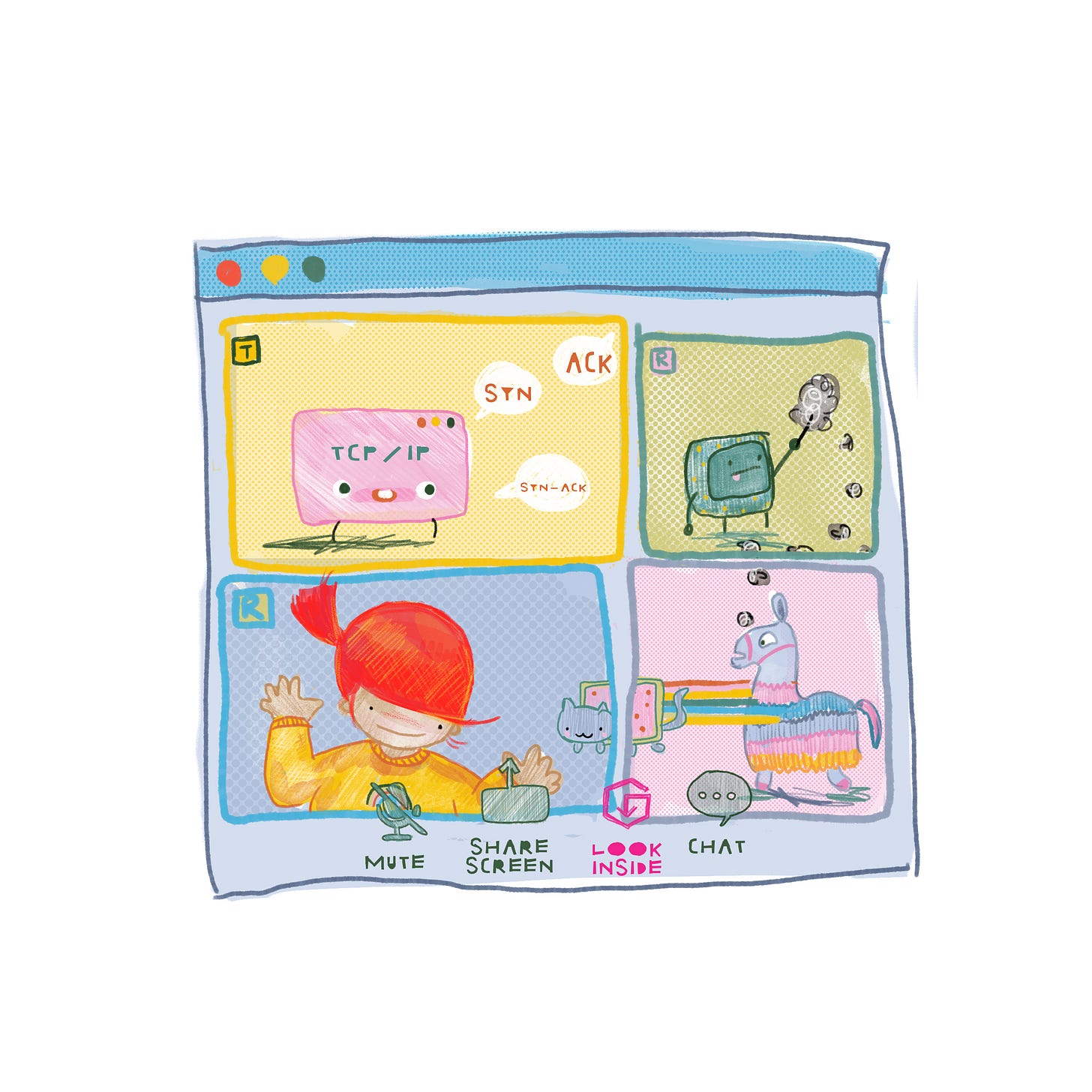No. 48 — Multiplayer mode ⫶ HTTP Verbs ⫶ Oslo Future Library
Why is it so moving to see people move or dance at the same time?
My name is Linda. I write a bi-weekly newsletter about computer science, childhood and culture - and there are 9 744 of you listening. If you enjoy this issue, please share it with anyone you think may find it useful. And with a little time-space continuum hick-up, here is no. 48, conveniently just after 49.
My older daughter asked me, “Mom, how can so many people move exactly at the same time?” And I said, “They practice.” She watched, rapt. And I thought, Why is it so moving to see people move or dance at the same time? Thousands of people moving at the same time, in vaguely martial fashion, could mean: We could kill you if we wanted to. But instead we are moving our arms and legs at the same time to express joy, friendliness, and grace.
- 100 Essays I Don’t Have Time to Write by Sarah Ruhl
Back in 2019, I saw Arnold Schönberg’s Gurrelieder performed at the Helsinki Festival. It was a massive piece of work, with approximately 150 instrumentalists and 200 singers performing together. I remember feeling in awe, seeing so many people create something synchronously.
I was trying to explain to a classical music enthusiast how the exact same thing that enthrals in choir music and dance happens in multiplayer games, but I got a blank stare.
Yet since the 2010s, the biggest games have been online and predominantly multiplayer. And while the games where you have 1000 vs. 1000 are yet to come, they will. These are experiences that will shape generations of children. When we bring kids together, whether in a classroom, a Discord server, Repl.it, or some other space, some kind of new form of multiple perspectives and presences arises.
So, how do we plan a curriculum and childhood experiences that encourage the multiplayer mode? How do we "move our arms and legs at the same time to express joy, friendliness, and grace" with the help of computers?
Maybe I'll start by asking the experts, the children, to describe the emotions they have around these ideas. Not to discover the new Fortnite features, but to find the same emotional response as flash mobs, synchronised swimming and choral singing spark in us.
If you work with kids, you can try this out too:
Do you know what the multiplayer mode is? What do you think it is for? Why has it been built? Is there something you'd do differently? Are there things you'd rather do alone?
Linked List
In computer science, a linked list is a linear collection of data elements whose order is not given by their physical placement in memory. But here it is a selection of things I’ve been reading lately.
Matt Webb wrote about Christopher Alexander’s pattern language meets multiplayer, and again, maybe architecture is the place where we’ll find the correct expressions. Lovely. Moving Castles: Modular and Portable Multiplayer Miniverses is a bit more abstract, but interesting nonetheless.
Oslo Future Library has so many elements that make my neck tingle. “A public artwork that aims to collect an original work by a popular writer every year from 2014 to 2114. The works will remain unread and unpublished until 2114. One thousand trees were specially planted for the project in the Nordmarka forest at its inception; the 100 manuscripts will be printed in limited-edition anthologies using paper made from the trees.”
There ought to be new HTTP Verbs. New vocabulary here too!
Intelligence is everywhere lists basically all my favorite books from Ways fo Being to The Mountain in the Sea, Entangled Life, Braiding Sweetgrass and The Otherstory and manages to braid them together in the most eloquent way. “From AI to cephalopods, a new strain of "nature writing" explores the frontiers of non-human sentience.”
Classroom
I’m hoping to surface and share stories from all of you and I’d love to see your creations! Here are a few teachers using Ruby in creative, fun and inspiring ways.
This is an old video, but I only recently discovered it. It made me smile so much - what a thoughtful, significant critic. Creating educational materials can be lonely, and having someone look deep, and bring their attention to the work, is such a gift.
From Warsaw, Poland, one parents reflection on visiting a child’s kindergarten classroom with the paper computer activity.
Cutest penguin crafters from Brazil and Centro Educacional Arraial D'Ajuda





Teaching HTTP verbs is critical to any young learner curious about how the internet works
Teaching HTTP Verbs is essential!!